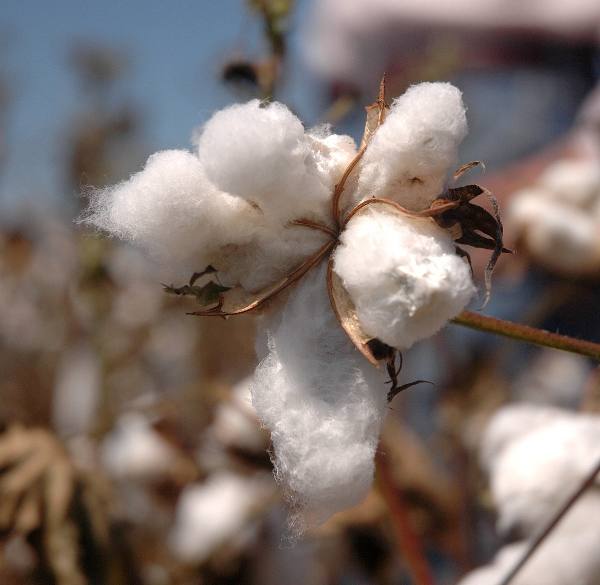October 23, 2012

Despite drought, record-high summer temperatures, an early freeze and the failure of many dryland fields, the Texas High Plains cotton crop could wind up near or slightly above the 10-year average, according to a Texas A&M AgriLife Extension Service expert.
Though the predictions seem contrary to what many expected, they’re based on the U.S. Department of Agriculture’s National Agricultural Statistical Service’s October surveys of farmers and measurements taken in fields, said Mark Kelley, AgriLife Extension cotton specialist, Lubbock.
“For a 2012 crop, they’re predicting 3.96 million bales produced in the High Plains – that’s in the 1-North (Panhandle) and 1-South (South Plains) districts,” Kelley said. “Looking back to ‘98, when I first came out here, to 2011, we had an average of 3.59 million bales. And for the last 10 years, the average was 3.89 million. So according to that, we’re going to be just slightly above the 10-year average.
Though many dryland acres failed in the Texas High Plains because of the drought and heat, he said the irrigated yields he’s seeing this year are pretty good.
“A lot of it is up around the two-bale (per acre) mark, and then there’s some that’s coming in even higher than that, where they’ve got good water and timely rainfall events,” Kelley said.
There was late-planted cotton that was “dinged pretty good” by an early freeze, but much of the crop seemed to escape major damage, he said.
“I’ve been pleasantly pleased with some of the results,” Kelley said. “Even after the freeze, the bolls were opening up at some of these locations. Of course, there is still some out there where the top bolls are having a tough time getting open.”
Kelley warned that anyone’s predictions this year may not hold up.
“Some of these fields are doing a lot better than expected. Some are doing a lot worse,” he said.
Statewide, the USDA predicts the 2012 cotton crop to total 6.1 million bales, 74 percent higher than 2011, a year of severe drought. Over the last 10 years, total bales produced ranged from a low of 3.5 million in 2011, to a high of 8.25 million bales in 2007.
More information on the current Texas drought and wildfire alerts can be found on the AgriLife Extension Agricultural Drought Task Force website at http://agrilife.tamu.edu/drought/.
You May Also Like




